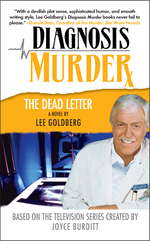Booksquare reports that The Romance Writers of America have passed a new rule barring the national and chapter websites from linking to authors with certain objectionable images or words on their bookcovers or on their sites/blogs.
… it’s pretty clear
the Board has never once, in their entire lives, taken a gander at the average
romance novel cover. If so, they’d realize they have just eliminated 99.9% of
all covers:
With respect to all RWA programs and services, the following shall not be
depicted or represented: exposed male and female genitalia, exposed female
nipples, cunnilingus and fellatio, hands or mouth covering naked female breasts,
naked or g-string-clad buttocks, and beastiality. The following words: cock,
cocksucker, cunt, fuck, motherfucker, shit, and tit, will not be
displayed.
The president of RWA has clarified this regulation, saying this means (and we
quote):
. . .if we wish to retain our charter with RWA, we will no longer be able to
show jacket covers that don’t meet the standard and we can’t even link to the
websites of those authors who might show their own covers, have excerpts that
include certain language, or lead to the publisher’s website.”
So if their rules say they can’t link to any site that has the words cock,
cocksucker, cunt, fuck, motherfucker, shit and tit, then they can’t even publish this rule on their own site since, by definition, it means printing the words cock,
cocksucker, cunt, fuck, motherfucker, shit, and tit.
That said, I’d like to belong to any writers organization progressive enough to have the words cock,
cocksucker, cunt, fuck, motherfucker, shit, and tit in their rules for anything. I’m pretty sure there isn’t a rule in the Mystery Writers of America or the Writers Guild that includes the words cock,
cocksucker, cunt, fuck, motherfucker, shit, and tit, but I think there should be. Imagine what DEADWOOD would be like without the words cock,
cocksucker, cunt, fuck, motherfucker, shit, and tit. Or Harry Potter. Or our National Anthem.
You can’t use the words cock,
cocksucker, cunt, fuck, motherfucker, shit, and tit, but it’s okay to use the following words and phrases instead:
his throbbing maleness, adoring his gargantuan manhood, heavenly cave
of feminine delight, give me some of that hot monkey love, butt hole pirate, poop,
and swelling bosom.
I guess they won’t be linking to my site. I don’t use the words cock,
cocksucker, cunt, fuck, motherfucker, shit, and tit, but I’ve got a big Dick on the cover of most of my books.
UPDATE : My brother Tod has some thoughts about this new rule, too, the one that forbids certain images and words like cock,
cocksucker, cunt, fuck, motherfucker, shit, and tit, though he doesn’t use cock,
cocksucker, cunt, fuck, motherfucker, shit, and tit anywhere in his post (which is a word that, incidentally, is an acceptable alternative for cock)





